I’m so old school. I’ve always been reluctant to blog, using this site, www.gluckman.com solely to publish and archive my stories, mainly culled from over 25 years of reporting around Asia-Pacific. But since I’m finally revamping my site (created in MS Word in 1995, then using Front Page, which was killed even before most of the world’s traditional media), I’m finally going over to the BLOG side. After all it’s 2017!
________________________________________________________________________________________________________________________
IN THE NEWS:
Turmoil and swirling rumors of palace intrigue are sweeping Saudi Arabia. The action pits princes against princes, in a royal shakeup that has reached even to Prince Alwaleed bin Talal, one of the richest men in the world, and among the most powerful in the Saudi kingdom.
The billionaire Prince has also long been a voice for reform in the strictly regimented state, and a favorite with the western press. So it was shocking news to find he was among a dozen members of the royal family arrested in what appears to be a major ramp up of the power consolidation by Crown Prince Mohammed bin Salman, the favorite son of ruler King Salman.
Let’s make no mistake: Alwaleed is no angel. I interviewed him in 2009, and found him to have an oversized ego and, like much of the ultra-wealthy, with ample focus on himself. Yet, he was long a champion for increased women’s rights in a draconian state (while I was in Saudi Arabia, a couple were detained for having coffee at Starbucks, in-chaperoned!!!).
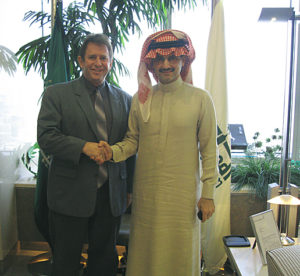
The Prince and the Pauper
Saudi was, and remains the weirdest place I’ve been outside of North Korea. Across the Gulf, you have the same unjust, unsustainable system of a small ruling class imposing its will and oppressing a large, poor worker class (not to mention the shameful exploitation of foreigner workers – a whole separate issue.) But in Saudi, there is little lip-service paid even to the upraising of the indigenous locals, who live separate, in backwards conditions that seem more suited for South Park parody than real life. And the situation seems all the more perverted considering the immense Saudi wealth.
Alwaleed is famous for his eccentricities. I write regularly for Forbes, and he’s the only person on the rich list that I recall who threatened suit, not to protect his privacy (often the case), but because he insisted his wealth was greater than Forbes calculated! However, his talk of modernization and women’s rights were genuine and courageous in the context of such a society: a large proportion of executives in his Kingdom Group were women.
Alwaleed also must be credited for challenging another despot: that orange-tinted bully who seized power in the USA. “You are a disgrace not only to the GOP but to all America,” the Prince posted on Twitter way back in 2015, while the nightmare was still in the formative state during the endlessly depressing campaign. (Trump of course responded diplomatically, calling him the “Dopey Prince,” and promising a change if he got elected. That has come to pass, with Trump reps bypassing the Prince in Saudi trips, amidst increasing escalation of Saudi militancy, including war in Yemen, and confrontation with Qatar. This is all playing out in a region far more volatile and dangerous than North Korea, which gets more attention at the moment.)
I thought I’d repost the story I did on Alwaleed, from 2009. You can also see it on my website (https://www.gluckman.com/Prince%20Alwaleed.html) along with almost three decades of work from around Asia and the world: www.gluckman.com/index.htm
The Prince of Profit
In the midst of a massive recession, one of the world’s richest men may have lost the biggest fortune; his holdings have plunged $8-10 billion. Yet the reformist, philanthropist and jet-setting Saudi Prince Alwaleed bin Talal isn’t dwelling on his loses. He still has his James Bond yacht, and the world’s largest private jet, plus his numerous desert palaces. There, he plots his next acquisitions. In such uncertain times, he sees opportunity.
By Ron Gluckman/Riyadh, Saudi Arabia
ALL AROUND THE WORLD, WEALTH IS IN TANKING. Fortunes have evaporated, almost overnight. Commerce has come to a standstill, as some of the world’s biggest investors have pulled back. The chaos is killing the global economy, but even the biggest banks and most flamboyant risk-takers are taking a wait and see stance.
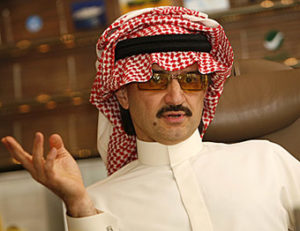 Yet to one of the world’s biggest billionaires, Prince Alwaleed bin Talal bin Abdulaziz Alsaud of Saudi Arabia, this is worse than putting the brakes on a global economy that desperately needs a bit of fuel. It’s also missing the chance of a lifetime.
Yet to one of the world’s biggest billionaires, Prince Alwaleed bin Talal bin Abdulaziz Alsaud of Saudi Arabia, this is worse than putting the brakes on a global economy that desperately needs a bit of fuel. It’s also missing the chance of a lifetime.
“This is a fantastic opportunity. Now is the time to buy,” says the Saudi prince with great exuberance. “I’m totally, 100-percent optimistic.”
Such confidence amidst the global economic malaise would be inspiring from almost anyone, but what makes the unbridled buoyancy particularly striking is the perspective of Prince Alwaleed bin Talal. Long among the world’s richest men, he’s in an ultra-elite crowd of mega-billionaires. Forbes Magazine regularly lists him in the Top 10 or Top 20 of the world’s richest, pegging his personal wealth in 2008 at $21 billion.
What truly puts Prince Alwaleed in an ultra-exclusive class is what happened since: his investments tanked. Many know the buzz of making billions, but this Prince is among the rarest of the rare who can describe losing similar sums.
Everyone these days is feeling the pinch – Forbes estimated that perhaps a quarter of the world’s billionaires were slapped back into the class of mere multi-millionaire – yet few can match the Prince’s particular misfortune. Or pluck. Conservative estimates put his recent loses in the neighborhood of $3-4 billion. Forbes estimated in March that his personal fortune shrank nearly $8 billion, or almost 40 percent from the year before.
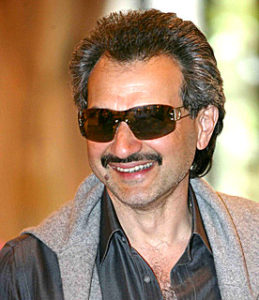 What’s it feel like to lose so much money? “I’m not down at all,” insists the handsome Prince, who turned 55 in March 2009. “You should know that I take each loss seriously, each million, each 100 million, each billion. Of course, it affects me. It impacts me. I take it personally. I just make sure it never happens again.”
What’s it feel like to lose so much money? “I’m not down at all,” insists the handsome Prince, who turned 55 in March 2009. “You should know that I take each loss seriously, each million, each 100 million, each billion. Of course, it affects me. It impacts me. I take it personally. I just make sure it never happens again.”
When the going gets tough, according to this entrepreneurial prince, that’s the time to go shopping. “This is an opportunity. I see this as a time of incredible opportunity. You buy into companies when they are devastated.”
This Prince would know. He’s cultivated his vast fortune with an uncanny knack for buying at rock-bottom prices. Prince Alwaleed first gained international fame with a fortuitous bailout of Citicorp. He paid $207 million for 4.9 percent of a banking firm on the brink of bankruptcy in 1990, investing $590 million more in the gloomy days just before the first Gulf War. Within eight years, that stake soared to a value of $7.6 billion.
As to his recent declines, he retorts that he has suffered, in percentage terms, similar setbacks before. His shares in CITI (as it’s now known) were valued this February at $623 million. That’s more than a 90 percent dive from the peak price. “On my scale, you don’t make mistakes, you make blunders,” he says, laughing. Then, dead-serious, he adds: “I’ve made my fortune before. I know I can do it again.”
Indeed, little seems out of the ordinary in the Prince’s luxurious office in Riyadh, Saudi Arabia. Dressed traditionally, in red-and-white checkerboard headscarf and long, beige robe, the Prince sits flanked by rows of 16 televisions, behind a massive desk on the top floor of the tallest building in the kingdom.
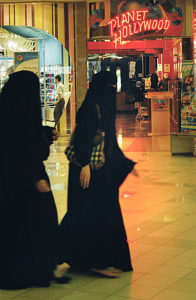 This is headquarters of Kingdom Holdings – his holdings (the Prince owns 95 percent of the recently-listed company). You enter the guarded elevators to his office via the ground-floor lobby of the glitzy Four Seasons, the country’s finest hotel – the Prince’s hotel. He owns many properties in the Middle East and around the globe run by the luxury chain, and bought Four Seasons for $3.7 billion in 2007 with his pal Bill Gates. He is also majority owner of the premium Raffles and Fairmont brands, and has a sizeable stake in the Movenpick hotel chain.
This is headquarters of Kingdom Holdings – his holdings (the Prince owns 95 percent of the recently-listed company). You enter the guarded elevators to his office via the ground-floor lobby of the glitzy Four Seasons, the country’s finest hotel – the Prince’s hotel. He owns many properties in the Middle East and around the globe run by the luxury chain, and bought Four Seasons for $3.7 billion in 2007 with his pal Bill Gates. He is also majority owner of the premium Raffles and Fairmont brands, and has a sizeable stake in the Movenpick hotel chain.
The Four Seasons is the center of high society in modern Riyadh; smartly robed Saudi men bark into cell phones and do deals in the lobby. Women bustle past in black burqas bound for the adjacent high-end mall – the Prince’s mall – filled with Saudi’s top shops. International outlets range from Saks Fifth Avenue to Planet Hollywood, and the Prince has a stake in practically all of them.
His interests and investments range far and wide – from Apple and Motorola to Euro Disney to the biggest food and real estate companies in the Middle East. The attraction, he says, is an ability to build value and realize high returns. Even in the highly competitive hotel industry, where many look to long-term equity rather than cash-flow, he notes: “Our average return has been 35 percent, over the last 25 years.”
The Prince has a keen mind for figures, and an encyclopedic embrace of his varied investments, which he jokingly calls “my 100 wives.” Muslims can take multiple wives, but this devout follower – he prays five times daily, and twirls prayer beads constantly – has never done so. He finds variety in the world of finance. The wall behind his desk is a mosaic of color, comprised of logos of all the companies he has shares in. “He knows them all, and their finances down to the last dollar,” one top associate confides. “His memory is photographic.”
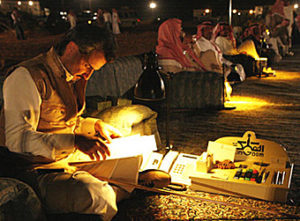 Indeed, he can recite numbers at a rate that leaves even reporters reeling: the exact percentages he holds in the wall of investments right down to the latest trading price of each, which he checks regularly on the banks of TVs and his desktop computer. Even on sojourns to his desert palace, where he retreats nearly every week, he is rarely without laptop, or satellite phone. He’s a serial SMS sender, punching out messages during meetings. Yet, until 2004, he rarely carried a mobile phone, according to his biographer, well-known TV newscaster Riz Khan. Princess Reem, one of two children from his first marriage, introduced him to SMS, and he was instantly hooked.
Indeed, he can recite numbers at a rate that leaves even reporters reeling: the exact percentages he holds in the wall of investments right down to the latest trading price of each, which he checks regularly on the banks of TVs and his desktop computer. Even on sojourns to his desert palace, where he retreats nearly every week, he is rarely without laptop, or satellite phone. He’s a serial SMS sender, punching out messages during meetings. Yet, until 2004, he rarely carried a mobile phone, according to his biographer, well-known TV newscaster Riz Khan. Princess Reem, one of two children from his first marriage, introduced him to SMS, and he was instantly hooked.
He’s also a television junkie, favoring business news, but he’s an avid reader, who sets aside several hours daily to indulge. His thin frame attests to both his dietary habits and enthusiasm for exercise. While studying in the United States, he put on serious weight. Ever since, he’s been a strict vegetarian who avoids fatty foods, and a keen walker and cyclist. “I ride for an hour every day,” he says, but concedes keeping a phone handy for deal making. An acknowledged workaholic, he sleeps only five hours a day.
His discipline is as renowned as his meticulous routine. “Every minute is accounted for,” notes Heba Fatima, executive manager of his communications department. “He’s not like other royals. He’s quite structured. You can time your watch by him.” She offers a thick stack of papers, the itinerary for a recent London trip. Details are exhaustive; even strolls of 15 minutes are scheduled. “Everything he does is here.”
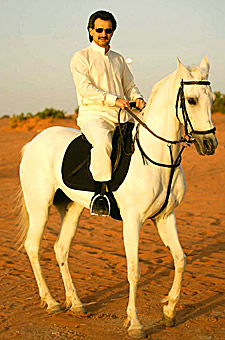 He roams the globe meeting presidents, kings and celebrities – the Kingdom waiting room is crammed wall-to-wall with photos of the Prince and world leaders, underneath scores of honorary degrees. Several racks are packed with reprints of magazine stories about the Prince, yet he likes to talk about less illustrious topics, like his investments in Africa. “We are involved in 30 countries,” he says, noting that he has crisscrossed the continent. “I’ve been to 48 countries in Africa; there are only two I haven’t been to.”
He roams the globe meeting presidents, kings and celebrities – the Kingdom waiting room is crammed wall-to-wall with photos of the Prince and world leaders, underneath scores of honorary degrees. Several racks are packed with reprints of magazine stories about the Prince, yet he likes to talk about less illustrious topics, like his investments in Africa. “We are involved in 30 countries,” he says, noting that he has crisscrossed the continent. “I’ve been to 48 countries in Africa; there are only two I haven’t been to.”
He grows extremely animated as he recalls a particularly moving visit a decade ago to Nigeria, where he met the president. “He was very upset. There was a famine and he was frustrated with the response from aid agencies.” Relief was arriving, but a few thousand here and there, from different countries. “He was in tears. He told me that two to three million of his people would die within the next few months.” The Prince had scant knowledge of Nigeria, an unscheduled stop on an African tour, but knew what had to done. “I gave him three million right there, then another four million. I was shocked to find out that a few million dollars could save a million people.”
Almost as much as this profit-minded Prince likes to make money, he is thrilled to give it away. This also puts him in a select crowd of billionaires – he’s a major philanthropist, and has been for decades. “I’ve been giving away $100 million or more for some time now,” he says proudly, noting that this passion for philanthropy predates any trend among fellow multi-billionaires like Bill Gates and Warren Buffet. “When I started, 25 years ago, there was no Gates Foundation. And Buffet only began a few years ago.” Associates estimate his philanthropy has totaled $2.5 billion to date.
Even as his investments dive, the Prince refuses to tighten the purse strings. Quite the contrary, he plans to increase his philanthropy through Alwaleed bin Talal Foundation. He has given over $100 million to some of the world’s top universities – Georgetown, Harvard and Cambridge – mainly for Islamic studies or Muslim-Christian understanding. He has also endowed American study centers in Cairo and Beirut. His charity is varied and boundless. A gift of $20 million to the Louvre was the Paris museum’s largest single donation. After a tsunami swept Asia in 2004, he was the largest individual aid donor.
“This absolutely will not be touched by anything that happens at Kingdom,” he says of his charity, which is not bound by faith, only need. “Charity and assistance have no religion,” he says. “In my view, there is no grand vision, only great need.”
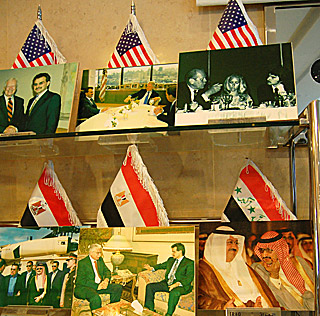 Foundation Director Muna AbuSulayman, a former television personality who has been dubbed the Arabic Oprah Winfrey, says the focus going forward is on maximum impact. “The Prince has never stopped giving, and has grown very strategic,” she says. The goal at the foundation is to target key individuals with innovative ideas, and help bring them to fruition, and provide seed money to spur on worthy projects. “There are only a handful of big foundations in the Arab world that have over $25 million to give. With a fund this size, we can do a lot, especially linked to strategic partners.”
Foundation Director Muna AbuSulayman, a former television personality who has been dubbed the Arabic Oprah Winfrey, says the focus going forward is on maximum impact. “The Prince has never stopped giving, and has grown very strategic,” she says. The goal at the foundation is to target key individuals with innovative ideas, and help bring them to fruition, and provide seed money to spur on worthy projects. “There are only a handful of big foundations in the Arab world that have over $25 million to give. With a fund this size, we can do a lot, especially linked to strategic partners.”
Not all of the princely gifts have been well received. Perhaps his most famous donation is one that was refused. In the aftermath of September 11, 2001 attack on the World Trade Center, Prince Alwaleed flew to New York, presenting Mayor Rudy Giuliani with a check for $10 million. The offer was rebuked following remarks made by the Prince suggesting that America consider the motivation for the attack, and its policy in the Middle East.
Many including President Obama now suggest much the same, but at the time, it was an unpopular opinion. Ironically, the Arab world rallied around a Prince often criticized for being too pro-western. “Even Yasar Arafat called to congratulate me,” he says, not that he was trying to curry favor. “I did it as a gesture, as the biggest foreign investor in the United States, to show that Saudis really cared about the US.” Instead, he feels Giuliani milked the controversy for political purposes.
The experience was a rare step into the political spotlight for Prince Alwaleed, who is connected to ruling families in both Saudi Arabia as well as Lebanon. His maternal grandfather was Riad El-Solh, the first Prime Minister of modern-day Lebanon. Prince Talal, his father, is son of Saudi Arabia’s founding King Abdul Aziz Al Saud. The current king is his uncle.
Yet he rebelled against the royal court, to the extent that his family shipped their wild son to a military academy when he was only 13. “It was a life-changing experience,” he recalls. The youngest and smallest student in the school’s history, he quickly acquired the discipline that he had lacked, and that guides him to this day.
Much is made of his meteoric rise, after returning from studies in the United States. He started with a small loan from his father, and quickly moved from construction and real estate into banking. He made his first billion by 1988, and by 1990 his worth was estimated at $4 billion.
The Prince has not been above the temptations of wealth. He travels in his own 747, but will soon move into an A380. The price reportedly was $300 million, not including outfitting, which could cost hundreds of millions more. “I bought the plane because I got a good price,” he says, repeating what is practically his mantra.
He owns horses, fleets of cars, and his family has just moved into 420-room palace, complete with a pair of indoor pools and indoor tennis court. They also have a 120-acre retreat outside Riyadh with lavish stables, a small zoo and five artificial lakes.
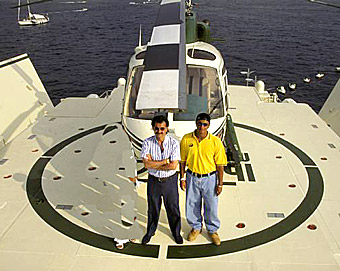 Every year, they sail on his yacht “Kingdom” off the coast of Cannes, where film fans may do a double take. Formerly called “Nabila,” the boat served as the villain’s lair in the James Bond flick “Never Say Never,” and later belonged to Donald Trump. When hard times hit, Trump dumped it, and the Prince pounced. “I bought it for $19 million, and the replacement cost would have been $150 million.”
Every year, they sail on his yacht “Kingdom” off the coast of Cannes, where film fans may do a double take. Formerly called “Nabila,” the boat served as the villain’s lair in the James Bond flick “Never Say Never,” and later belonged to Donald Trump. When hard times hit, Trump dumped it, and the Prince pounced. “I bought it for $19 million, and the replacement cost would have been $150 million.”
Unlike many royals in the region, the Prince has never been linked with bad art, gaudy mansions or wild partying. He has had four wives, but one at a time. “I don’t collect cars or art,” he notes. “I collect companies.” His main diversion, he says, is his weekly retreat in the desert, where he meets with Bedouins, strolls deep into the sand, then stays up late staring at a log fire, pondering his next investment.
Even amidst the current downturn, which has been especially cruel to real estate, the Prince plans to move ahead within months on his most ambitious project: Kingdom Tower, the world’s first mile-high skyscraper, and Kingdom City, a surrounding 1750-acre commercial and residential development in the holy city of Jeddah. The cost could top $10 billion. Also on the drawing board is Kingdom City, a $6.6 billion mix of housing, hotels and a snazzy country club on over 4000 acres east of Riyadh.
“What drives me?” He ponders for only a moment. “Success,” he says. “Success, success, success. I’m the kind of person who never sees a glass as half empty. I’m always the optimist. To me, it’s always half-full.”
_________________________________________________________________________________________________________________________
A ROYAL FAREWELL
I’ve been remiss from updating this blog, as I’ve been traveling a lot lately, and have lots to post from recent events, travel, food and quirky stories. But nothing compares even slightly to the events unfolding around me now in Bangkok: the cremation of the former king of Thailand.
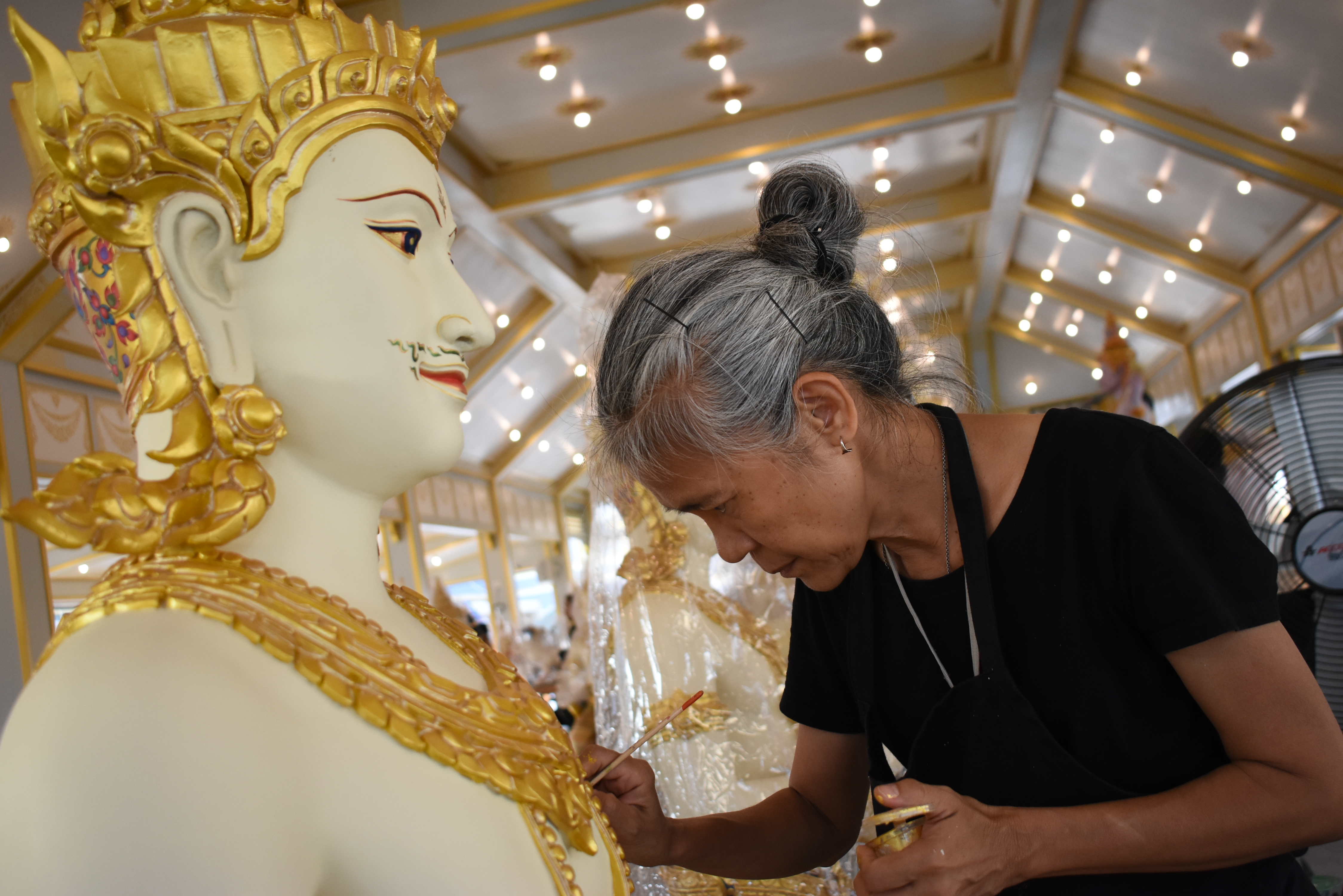
The cremation ceremonies are a massive five-day event, consuming all or Thailand. It’s hard to put in perspective how important this is, and how completely it impacts the entire country. I tried on my recent travels, but unless you are here, and are Thai, it’s nearly impossible to comprehend.
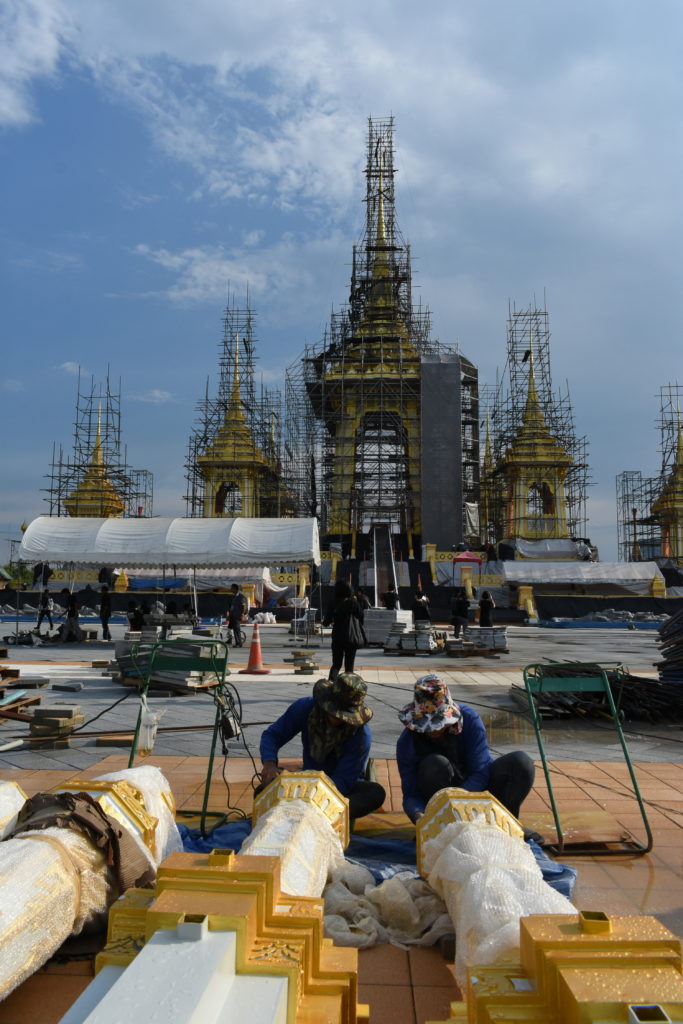
Imagine the World Cup, crossed with a potentially epoch-altering event, like an election. But such comparisons are insubstantial: World Cups and elections come every four years. King Bhumibol Adulyadej, who was 88 when he died last year, reigned for over 70 years, not only the world’s longest ruler, but the only king most Thais ever knew. Widely beloved, his death launched an intense year of mourning that hasn’t ended yet.
Last year, returning from my annual visit to family in the USA, I arrived the night before his death, and the welling sadness was already overwhelming. I joined the crowds at the hospital, and spent a couple sleepless nights afterwards, jetlagged and exhausted, but invigorated by the emotions all around me, this massive outpouring of humanity, united in grief.
And it was visible, visceral. Overnight, the country went black and white: clothes, websites, signs. In a country as colorful and lively as Thailand, it was shocking, like the switch on a TV went from the 2010s to 1950s.
Once again, I returned yesterday from visiting my father, almost the same age as the king, just in time for the cremation. Before I departed Thailand, I had visited the cremation facilities, this huge temple complex constructed just for the sendoff of a unifying figure who was not only a king, but a father to all, and godlike in Thai Buddhist fervor.
Thousands of workers and artists have been laboring day and night to prepare for a send-off that promises to be as spectacular as the King’s reign. Ancient artifacts, unseen in eons, will be displayed. Scores of statues and murals have been meticulously created, pavilions built for specific ceremonies, even rice fields planted, and then, within days, all will be gone.
Acoss the country, more than 80 replicas of the cremation grounds have been built, so all Thais can pay their respects, simultaneously. Meanwhile, everything else has come to a stop.
I’ll file more from today’s cremation, but here are some scenes from last night, in the flower gardens created as a tribute to the great father king.
meanwhile, you can read more about the cremation in an excellent story by my friend and colleague Joe Cummings, at https://www.bangkok101.com/a-kingly-pyre-oct-2017/

Black Sea Diary — July/August 2017
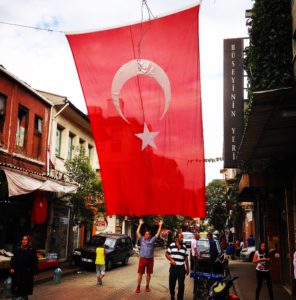
Exploring Istanbul
Lots of excitement, adventure and discoveries for me in Istanbul, and then onward; which so much going on that I’ve been busy enjoying it all, and not been back to this blog. Istanbul is one of the world’s great cities, an aromatic and historic mix of all the world’s major ideologies, religions and cuisines, sprinkled liberally with ample contradiction and chaos. If you haven’t been — go-go-go!
This time in Istanbul, I was focused mainly upon cuisine and food tourism, preparing for major culinary events later in the year like gastromasa (a kind of world cup of Turkish cuisine, see http://gastromasa.com.tr/ ) and Yedi (kind of like Ted Talks of Turkish Cuisine — https://www.facebook.com/yediistanbul/), that I will be covering later in the year.
But I wanted to prepare some advance coverage, so ran around on food and spice market trips, met with food writers and chefs, and indulged in some of the world’s best food. Thanks to all the hotels, restaurants, chefs and journalists who helped educate me, and offered insight, tours, and lodging.
Then, after Istanbul at the end of July, it was back to Samsun, major city on the Black Sea, where I have been living part-time since April. I returned just in time for the closing of another Olympics – the DeafOlympics. Really!!!
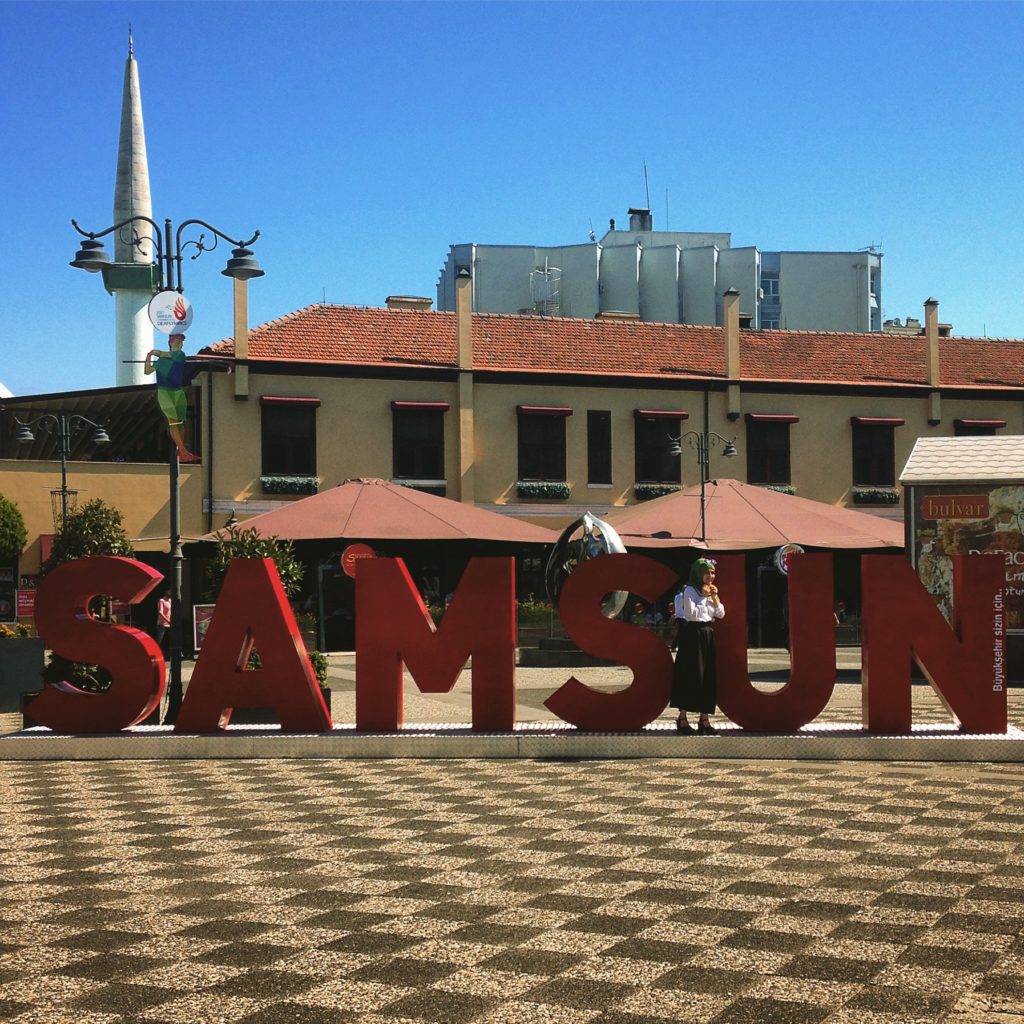
the main square in Samsun, major city on Turkish Black Sea
Samsun lacks the history of many other Turkish Black Sea towns like Trabzon, Sinop, or Amasya, which sport magnificent Ottoman buildings and ancient citadels from Greek and Roman times. Many towns served as ports and alternate transport routes at varying times on the fabled Silk Road. Some of these historic cities claim citadels that go back several thousand years, and settlements that go back 7,000 years.
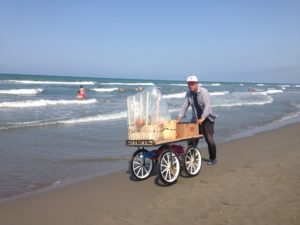
bread push cart on the beach in Atakent, seaside suburb of Samsun
Samsun, by comparison, serves as the the modern driver of growth along the Black Sea, but it’s also a charming seaside city with lots of universities and a great café culture. From a base in Atakent, a relaxed suburb right on the Black Sea (with a laid-back coastal look and feel that reminds of my Hong Kong base long ago on Lamma Island), I’ve been getting to know the locals and soaking up the culture. In the process, I’ve been contemplating a sort of Black Sea diary.
That has led to my current journey. After visiting some Black Sea towns around Samsun in April-May, I returned in July, and headed East from Samsun, to the ancient city-state of Tabzon, then onto Rize, colorful center of Turkey’s tea-growing region.
This is an amazing story, especially if you have ever visited Turkey, where you constantly served glasses of tea not only at restaurants, but every stop: markets, shops, homes.
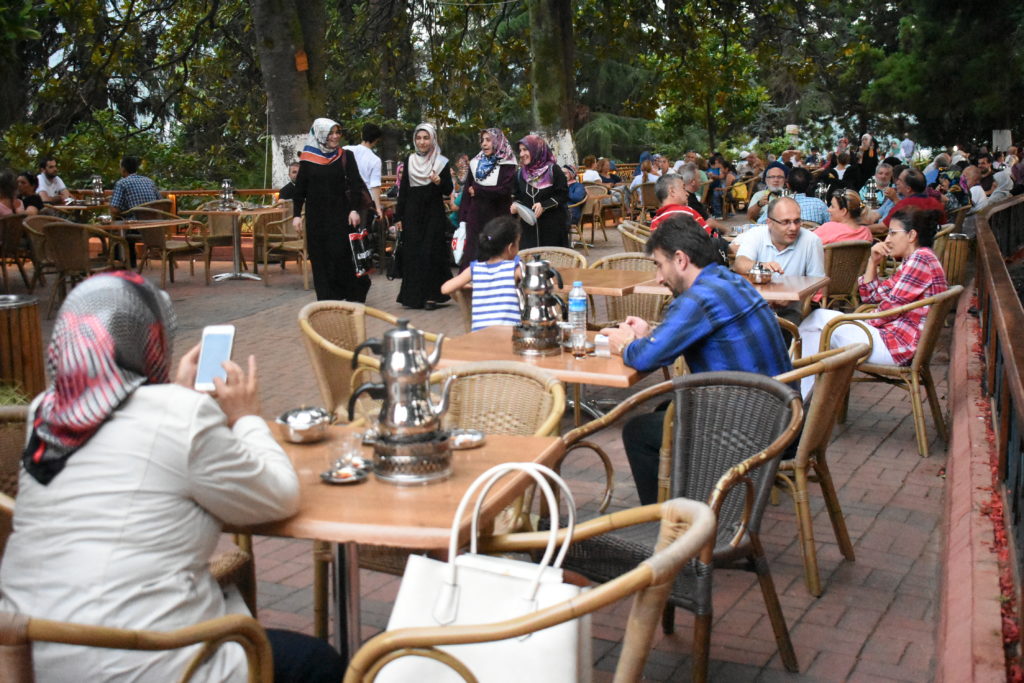
Atop Rize, the old citadel has been turned into a tea center with gardens, processing, and of course, a massive outdoor tea restaurant
Yet a century ago, Turkey consumed virtually no tea. Instead, it was a huge coffee country. But the economic doldrums after World War II prompted the government to push tea as a new potential cash crop that has revived the fortune of the Rize and mountain areas. Now Turkey is a major tea consumer, and producer, with all the tea being grown in the unique hilly region around Rize.
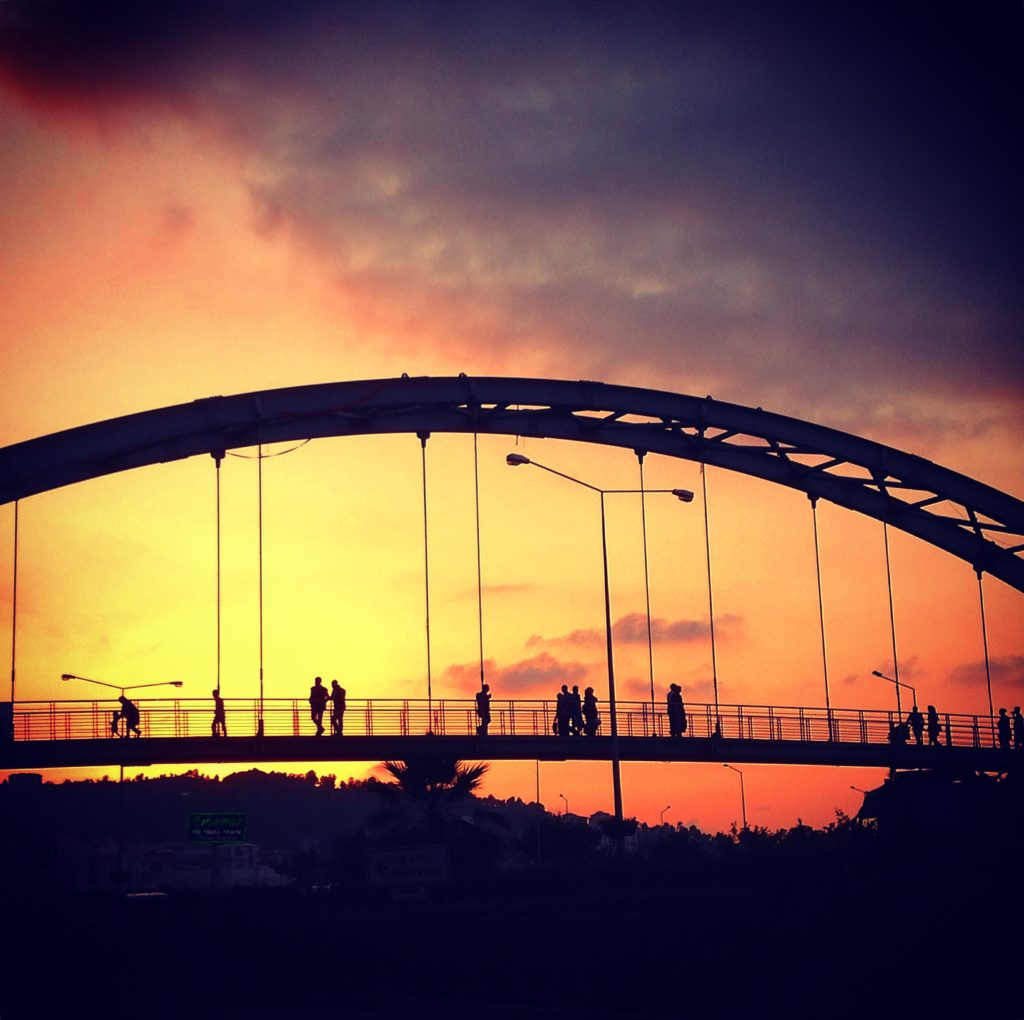
Rize is a colorful town in Eastern Turkey, by the border with Georgia
The unique micro-climate – hot summers but cool winters, even snow – lends itself to a hearty kind of tea, produced rare conditions. Virtually no other countries produce tea in areas that freeze, and the extreme weather limits Turkey to a single harvest.
Major tea producers like China and Sri Lanka harvest year-round. And Rize is the only area of Turkey suitable for tea, so must provide enough to serve the tea-crazed appetites of Turks everywhere. Imagine if France or Italy had to satisfy all their wine needs from one single region!
I visited tea plantations and got an inside look at a new 10 million Euro project to upgrade Turkish tea, produce new varieties and improve marketing and branding. And I talked to the head of the Rize Commodity Exchange which focuses entirely on tea, about the challenges and plans now, and for the future. So, look for my story upcoming on Turkish tea.
From Rize, I headed into the hill country around Ayder, a magical land of mountains, waterfalls, alpine pastures, and mouth-watering food. Mention the area to any Turk, and he/she will immediately recite their favorite dishes, focusing upon the special milk, butter and dairy.
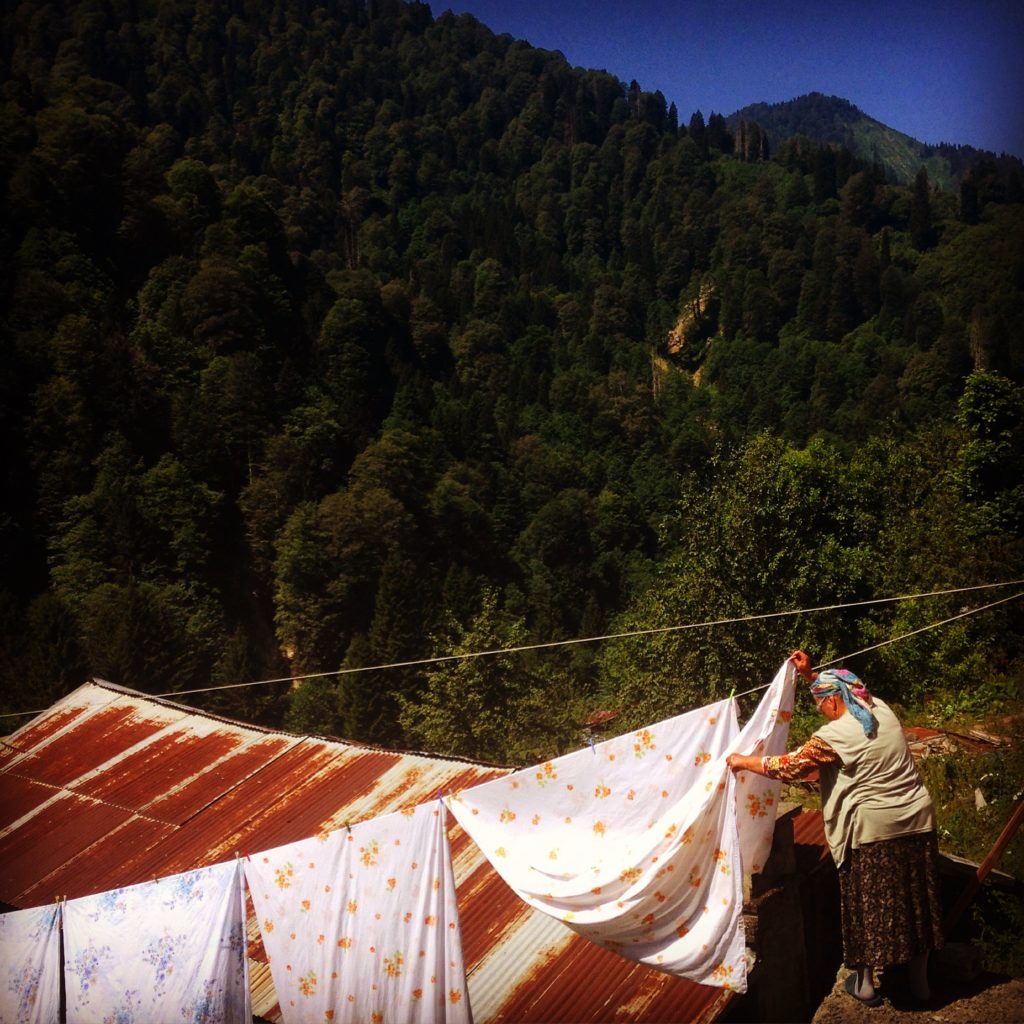
Turkish woman tends to laundry in hill country of Ayder
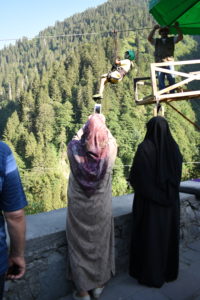
the hills are alive with ziplines, too
Ayder is only one of many colorful Turkish hill towns that boast abundant nature and views of traditional life, but it’s become the major tourist draw, with scores of hill lodges springing up to accommodate surging tourism. Most visitors have been Turks themselves, who come on family holidays, mainly in the hot summer months, but also for the snowy winters.
Yet, increasingly, tourism comes from the Middle East, especially Saudi Arabia.
In some ways, it’s a very funny contrast, as these hills become alive with a kind of Saudi Sound of Music!!!
That’s all part of the many attractions of the Black Sea region, and this is only the Turkish part. Since traveling in Turkey, I crossed over the border into Georgia, which has been an amazing revelation. I’ve heard such good news in recent times about Georgia, with all my friends who have visited raving about everything: the food, culture, pristine scenery and friendly welcome.
Even with such lofty expectations, I’ve been happily surprised.
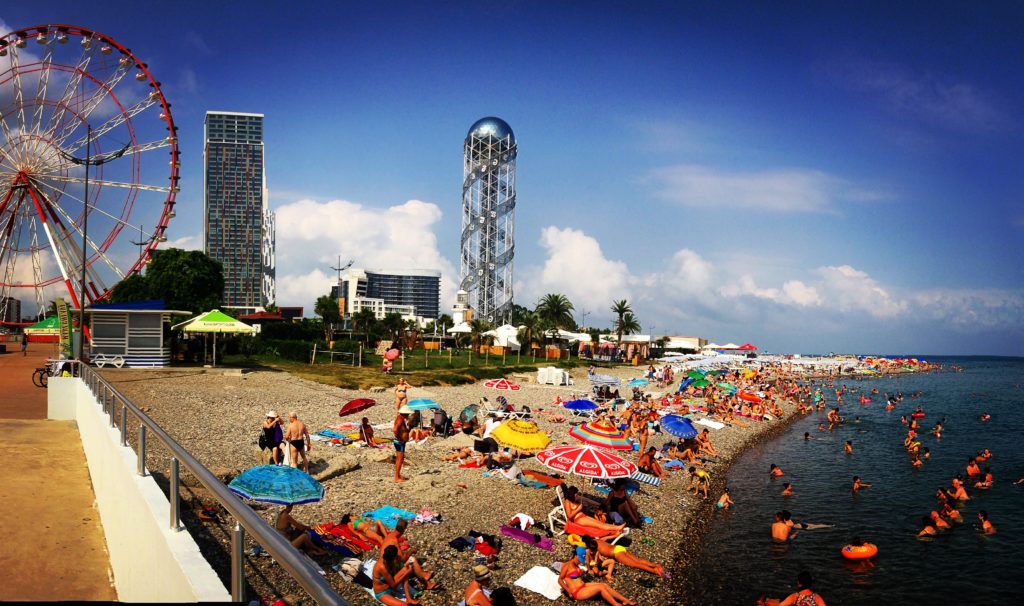
Batumi, the largest resort on the Black Sea, is a little bit Las Vegas, a lot Macau, and all Georgian
Since coming to Batumi, the major resort on the Black Sea, everything has been fabulous. The town is an historic 1800s port that is reminiscent in many ways to Shanghai. Although Macau also comes to mind, since this is the major casino center in the region, sort of Las Vegas on the Black Sea.
Besides big casino-hotels there amazing modern architecture, much of it wacky, over the top, total kitsch.
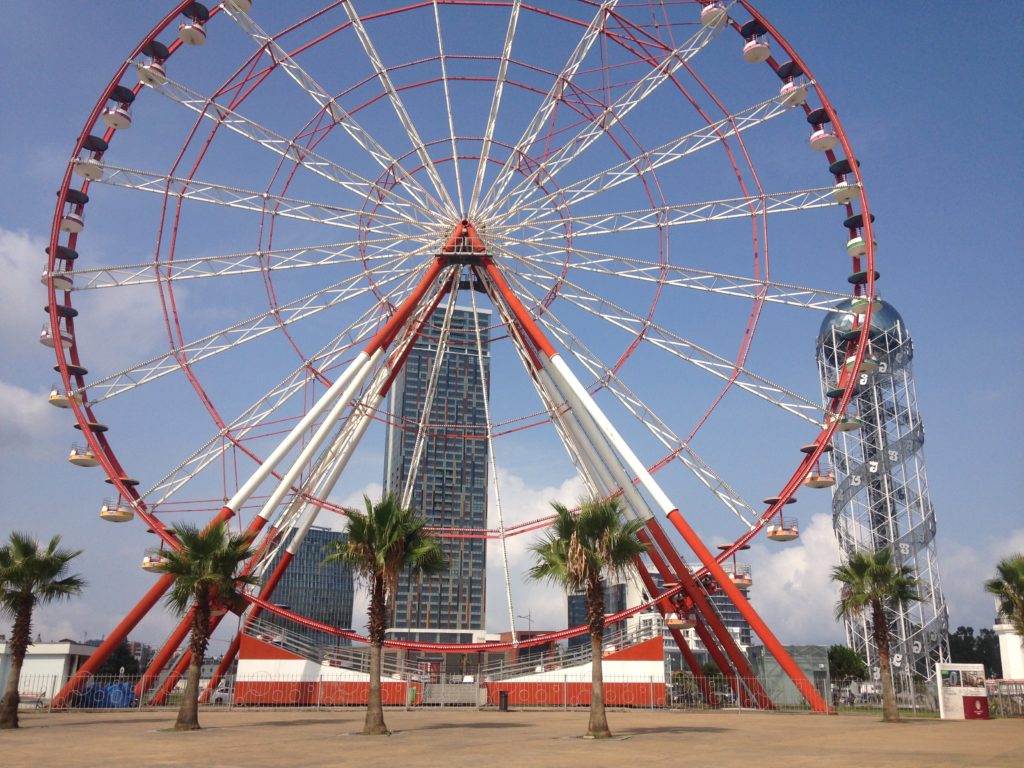 But it’s all exciting, and fun, and you feel the enthusiasm of a population that has it all, the seaside and surrounding nature, phenomenal (and insanely rich) food, and unlimited prospects, especially compared to the grim Soviet years and fighting after. There is a great energy in the town, and I found it hard to tear myself away, happily extending my stay in this vibrant beach town.
But it’s all exciting, and fun, and you feel the enthusiasm of a population that has it all, the seaside and surrounding nature, phenomenal (and insanely rich) food, and unlimited prospects, especially compared to the grim Soviet years and fighting after. There is a great energy in the town, and I found it hard to tear myself away, happily extending my stay in this vibrant beach town.
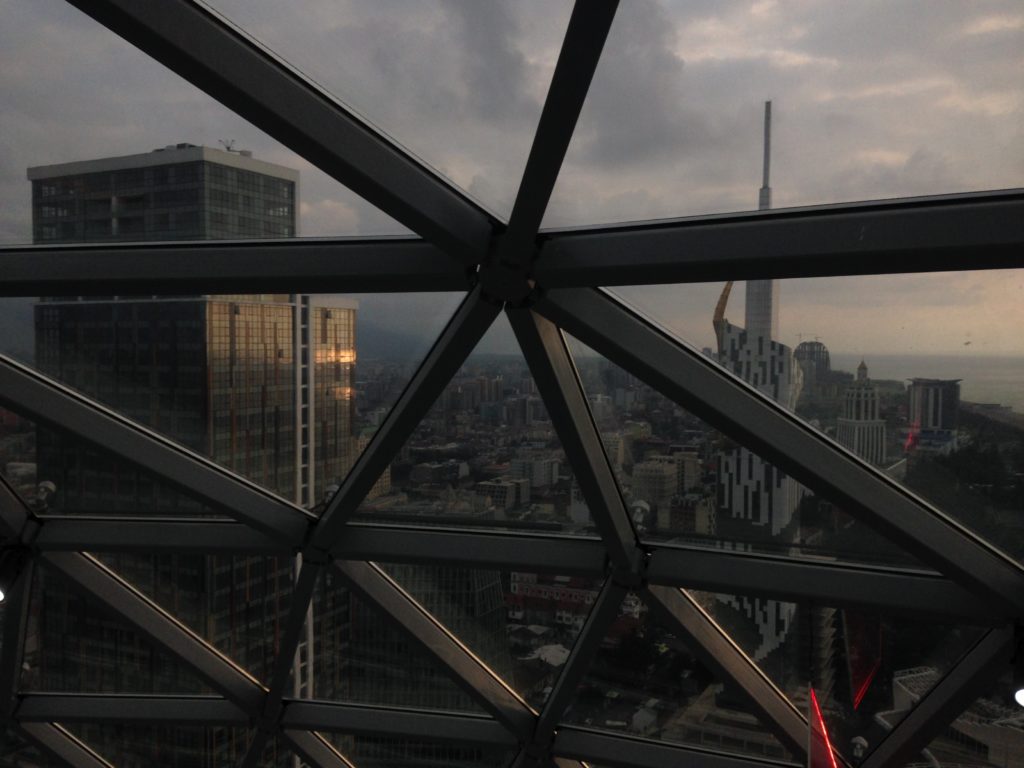
Gotham-style view of Batumi, Georgia’s Black Sea resort, from the Alphabet Tower
My rapture with Georgia may be partly due to the fact that I haven’t been in a new country in some time. So, I decided to add some more firsts.
I’m doing this post on a train! Rolling from Batumi to Tbilisi, the Georgian capital, which will be my next stop.
Check back for updates and more from Georgia and the region. And keep an eye on www.gluckman.com for my stories as they come out. Thanks for visiting!
_____________________________________
Ahhhhh… ISTANBUL
I’ve only dashed through one of my favorite cities in the world, Istanbul, Turkey, since a long, loving visit five years ago.

View from my balcony at the Ciragan Palace Kempinski Hotel, the prime property overlooking the Bosphorous and central to exploring Istanbul
But now, I’m back, and enjoying all the reminders of why this is such a phenomenal city: history, culture, chaos, bustle, bazaars and bizarre, and just such a joy to wander around neighborhoods rich in atmosphere, religion and, of course, food.
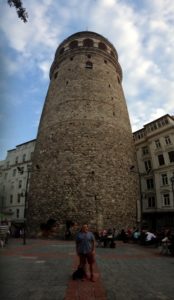 I’m in residence at the fabulous Carigan Palace Kempinski Hotel (Teşekkürler!!) right on the amazing Bosphorous, which once was the border between Europe-Asia, back when this was essentially the crossroads of the world. In many ways, it still is.
I’m in residence at the fabulous Carigan Palace Kempinski Hotel (Teşekkürler!!) right on the amazing Bosphorous, which once was the border between Europe-Asia, back when this was essentially the crossroads of the world. In many ways, it still is.
Check my blog and posts on social media for on-the-spot updates, and check back for my stories from Istanbul, on food culture, cuisine and tourism, and then later, as I head back to Samsun, to follow up my Back Sea Diaries, and begin my travel journey along the Black Sea to Georgia.
to see some of my previous dispatches from Istanbul https://www.gluckman.com/PageTurkey.htm
and my story for Time Magazine: https://www.gluckman.com/IstanbulArchitecture.html
____________________________________________________________________
HONG KONG:
It was 20 YEARS AGO Today!
Hard to believe, it was 20 years ago that Hong Kong ended its long, rich history as a British colony on June 30, and at the strike of midnight, returned to Chinese rule on July 1, 1997. Over the years, I’ve returned to Hong Kong to cover the ongoing changes, including the five-year anniversary (for Travel + Leisure; https://www.gluckman.com/HKHandover02.htm), and as recently as 2012 for the 15-year anniversary (for the Wall Street Journal https://www.gluckman.com/Hong%20Kong%20Tiananmen%202012.htm).
Amazing to think it’s now 20 years! As a permanent resident of Hong Kong, I was on hand then, watching the changes in the run up to that landmark day. I decided to cover the transition by following Han Dongfan, a Tiananmen protest leader, former political prisoner turned exile, and longtime labor activist as well as my neighbor on Lamma Island. That story ran in Time’s Asiaweek Magazine, right after the Handover, and it’s on my website as The Man Who Beat Beijing (https://www.gluckman.com/HanDongFang.html). Have a look, below.
The Man Who Beat BeijingAt midnight on July 1, 1997, the world watched as China reclaimed possession of the British colony of Hong Kong. The territory is a treasure, but it comes with a catch: Tiananmen dissident Han DongfangBy Ron Gluckman/Hong Kong HARDLY ANYONE NOTICED THE notorious Chinese man marking the minutes to midnight in Hong Kong’s central square. Certainly not the foreign journalists. Some six thousand of them had converged on the city for Hong Kong’s Handover, perhaps the Most Over-Hyped Event in History. For weeks, they had fallen over each other, filing soundbites for a story that cried out for context. From press briefing to handover ball they rushed, leaving no landmark unfilmed, no cliché unreported. And yet as the Magic Moment neared, the scribes failed to record for posterity the historic feelings of Han Dongfang — the Man Who Beat Beijing. “It’s hard to believe,” said Han, as the raucous crowd counted down the seconds to mainland rule. “After all these years, here I am, back in China.” Thousands had thronged Statue Square outside the domed legislature to await the end of Empire — and witness a piece of political theater. Elected leaders who refused a role in the Beijing-appointed legislature were about to address the crowd from the first-floor balcony. It would be Hong Kong’s first political demonstration under communist rule. For some, these moments were tinged with sadness. Others were just thankful it was all over. For Han, the handover had special meaning. It was making good his pledge to return home: the Chinese authorities had exiled the labor activist, but the mainland was getting him back just the same. Savoring victory, Han rubbed his thick hair and struggled for words. “It’s hard to say what I am feeling,” he said. “It’s many things: happy, excited, worried.”
Through June, Han’s face appeared on TV screens from Iceland to Tierra del Fuego. Yet he has steadfastly maintained: “I’m not the story. Hong Kong is. I’m only here to speak for workers in China.” Labor unrest, he was saying, posed the greatest threat to social order. In March factory workers in Sichuan province took a manager hostage; they hadn’t been paid in six months. Tens of millions of people are roaming China looking for work — a “time bomb” says Han. By contrast, Hong Kong’s return to the motherland is an historical footnote. Han was trying to explain to the media hordes the more important lessons of history. “The Chinese people will keep quiet, even when they have no food and the pressure keeps rising,” he says. “They will keep quiet until the day they can keep quiet no more. Then we will have rebellion.” Han has been talking this way ever since his giddy days in Tiananmen Square. Student leaders hogged the limelight and bellowed about democracy, but Han and his friends were there, too, talking about workers’ rights. Their Beijing Workers’ Autonomous Federation was probably China’s first independent labor group since the People’s Republic formed with the aim of addressing many of the same grievances. After the tanks rolled into Tiananmen, the world focused on the so-called democracy heroes. Yet many observers believe Beijing considered Han’s organization a greater threat. Han was jailed without trial. In prison he recalls other inmates coughing blood. Before long he was sick, too. After 22 months behind bars he was released on the verge of death. Han received a rare visa to travel to the U.S. for medical treatment. There he recovered and embraced the Christian faith. After overcoming tuberculosis, which cost him the use of a lung, Han spurned offers of asylum. He could think of little else but returning to fight for workers’ rights. Turned away at the border to China, Han retreated to Hong Kong, where he remained an exiled but potent critic. “People have always said foreign investment is the hope of China. This is our bridge to the world,” he wrote in a recent article. “But what comes across the bridge are 12-hour shifts, seven-day workweeks and only two trips to the bathroom a day. What comes across are factory fires that kill hundreds of workers who are locked in because their bosses are afraid they will steal the products. The Chinese government has put an invisible net across the bridge that allows money to come in but not the freedoms of a civil society, not the rule of law and not free trade unions.” Han understands the authorities’ dilemma only too clearly. They must close the money-losing state firms. But what to do about the millions of laid off workers? “China must let the workers talk,” Han insists. “That’s the first thing. They must release the pressure.” That is the message Han puts forward in the China Labor Bulletin and his weekly show on Radio Free Asia. Four thousand copies of the Bulletin are mailed to the mainland each month, but Han can’t say how many elude censors or confiscation. The reach of radio is easier to gauge; Han gets calls and letters from all over China. Beijing officials have lashed out at international labor organizations for funding Han’s crusade. To be sure they support him, but in a style to which his foes — factory bosses, bureaucrats — are definitely unaccustomed. Han lives with his wife Chen Jingyun and two U.S.-born sons, Jonathan, 3, and Nathan, 4, in a simple third-floor flat on Lamma Island, 40 minutes by ferry from central Hong Kong, but a world apart from the city’s neon hyper grind. The island has no cars, roads or supermarkets. It was a major event a few months ago when Lamma’s lone cash-dispensing machine got a rain awning. Cheap rents and rural living have long lured backpackers, artists, writers and dissidents. Han likes looking out his windows and seeing trees. The way Han tells it, before he found his current flat, another landlord first accepted and then returned his deposit. Apparently not everyone wanted a famous labor activist under their roof. The Han household looks like the family has just moved in, when in fact they have lived there for a year. The walls are bare save a mirror, family photos — and two revealing mementos: a clock and cheap banner, both emblazoned with the logos of Poland’s legendary Solidarity union. Han has been likened to its leader Lech Walesa, who became president after a workers’ revolt drove the communists from power. Time and again, reporters have made the inevitable comparison, and Han invariably has chuckled: “Me? President of China. Ha, ha, ha. No, I don’t think so.” He taps out copy for his radio shows and newsletters at a cluttered desk in the main room. There is no sofa; indeed little furniture of any kind. The decor speaks to Han’s modest circumstances — and to a grim, generally unspoken worry. Why put down deep roots when your future is so clouded? Many times Human Rights Watch/Asia chief Robin Munro has urged his friend and neighbor to leave Hong Kong. “I’m worried the Chinese government would regard him as their public enemy No. 1,” Munro confides. “That scares me to death.” But Han is staying put. Han prefers not to talk about worst-case scenarios, not even with the wife he married nine years ago in Beijing, the woman who waited as he wilted in prison. Munro recalls the day the activist got out. “I felt sure, as Beijing must have when they released him, that he was going to die.” Han fears jail, but his main worry is that Beijing will curtail his activities in Hong Kong. Han has a Chinese passport but it expires this month. The big test will come when he tries to renew his Hong Kong work permit 17 months hence. He has not traveled abroad all year for fear authorities might refuse to let him back in. “I want to stay in Hong Kong, but that’s really up to Beijing,” he says. “There’s not much use in worrying. I’m concerned, but not afraid.” Every weekday he commutes by ferry to the Hong Kong Christian Industrial Committee office on Peking Road, in a part of the Kowloon district frequented by travelers and copy-watch vendors. The run-down building is better known for the ground-floor Spaghetti Factory than the labor activist three flights up. The office looks like union halls from New York to Paris. Tea and instant coffee; dirty cups; a water cooler; angry labor posters. Nearly a dozen workers man phones or wrestle with ancient computers arranged around piles of leaflets and binders. An earnest, just-cause atmosphere permeates the place. Here, during handover hell, Han hosted Friday meet-the-press sessions, his only real concession to international fame. Ten days before Hong Kong’s date with destiny, Han played to a full house. “This is too much like a press conference,” he said at the outset, uncomfortable in his role as media star. “I have nothing special to say,” he quipped, then rearranged the chairs into a more informal circle. Smiling at the new setup, he added, “Good. Now we can talk.” The day dissolved into a long series of interviews that relentlessly trod familiar ground. It was like shooting Handover the Movie, take after take. Han offered details about labor unrest and strikes in China. He quoted official statistics, such as the fact that 9,000 mainland miners died last year. But the quote collectors were keener for his opinion of the Communist Party and its Hong Kong intentions. By the end of the day his enthusiasm had waned. He hadn’t had much sleep, and more reporters kept arriving, each seeming less prepared than the last. A Toronto reporter wanted details of Operation Yellowbird, the underground pipeline that moved dissidents from China to safety through Hong Kong. Han, who entered Hong Kong legally, calmly repeated for the umpteenth time: “I don’t really know about that. I’m not a dissident. I’m a trade unionist.” A week later, Han did it all over again. And in the frantic final days, crews began filming him on the ferry. By now reporters were looking for that fresh angle. “They all say they want to ask different questions,” Han sighs. “But they never do.” On Lamma itself, TV people in Italian jeans and Dexter shoes whispered into cell phones and bumped into the isle’s self-styled Bohemian inhabitants, wearing Save-the-Earth T-shirts and bemused expressions.
Much has changed since then. Han’s English reading skills are still slim, but he has become an eloquent speaker. It is hard to believe that he suffered from a severe stutter when he was a child. Han used to be “more angry. Now I am more peaceful.” Perhaps, but his basic nature remains unchanged. In a free society, Han would be a self-made intellect and a natural leader. In China, his gift for saying it like it is was bound to bring him trouble. Han Dongfang was born poor in Nanweiquan, a village of 2,000 people in Shanxi province, but was mostly raised in Beijing, where his mother fled following the Cultural Revolution. After graduating from high school in 1980, Han joined the Public Security Soldiers Corps, a precursor to the People’s Armed Police. He was 17. He served three years as a guard at Tuanhe, a prison camp south of Beijing that is eerily like the one he would later visit under different circumstances. Authorities may have had some inkling of Han’s irksome qualities — even then he was involved in battles over workers’ treatment — but they recognized his motivational skills and gave him his own squad. Next he worked as an assistant librarian at Beijing Teacher’s College. The pay was meager, but the fringe benefits handsome for a man with a curious mind. Han read most everything on the shelves — Hemingway, Freud, Greek classics. He left for a better-paying post at Fengtai Locomotive Maintenance Section. There he furthered his grassroots education, traveling the nation and seeing first-hand the parlous lives of people outside the cities. Along the way, squabbles with petty officials made Han feel that the People’s Republic was anything but. He became politicized when his family was moved from an apartment block undergoing redevelopment. Authorities promised alternative housing but never delivered. He moved back in and refused to budge. When students started gathering in Tiananmen, Han was ready to speak out. By April 1989, he was in the square every day, passing out leaflets. Until the handover media onslaught, Han had continued to work in relative anonymity on Lamma. As the big day loomed, he maintained an outward calm. But cracks began to appear. His wife asked him what would happen if he went to prison. “I don’t think I can face that again,” he confided. “If that knock comes on the door, I don’t know what I’ll do.” On handover eve, he was acting confident, cheerful. His sons were excited. “We’re going to see the fireflies,” Nathan enthused. The boys had little sense of the possible fireworks ahead. For them, like much of Hong Kong, the handover was a party. Eight hours later, the Man Who Beat Beijing stood in Statue Square. He was smiling. He had not come to boast. “Welcome home, Han,” a woman suddenly said. It was midnight; the media hadn’t noticed him yet. “Good luck, and god bless,” she added. And that was how Han’s first seconds back in China began, with a message of faith between two Christians. “I pray often,” Han said the next day, after waking for the first time in Hong Kong, China. “I pray to the Lord to open the eyes of the rulers of the Communist Party, to make them realize how people are suffering. If they could only see the suffering, then maybe there would be hope.” Now that the foreign reporters are no longer chasing him down the ferry dock, Han is left with his own thoughts; they veer between confidence and anxiety. “I’m not sure when [the authorities] will come to me,” he says. “But I’m sure they will. I expect it.” In the next instant he sees himself on the mainland, possibly running an education network for laborers. Only one thing seems sure: Han Dongfang won’t give up. Photos of Han by David Paul Morris |
————————————————————————————————————————————————————————–
WHERE IS RON???:
Back in Bangkok – after a steady stretch of travel, I’m back in Bangkok most of June. It’s rainy season, great storms, killer sunsets, rainbows, and good time for writing! 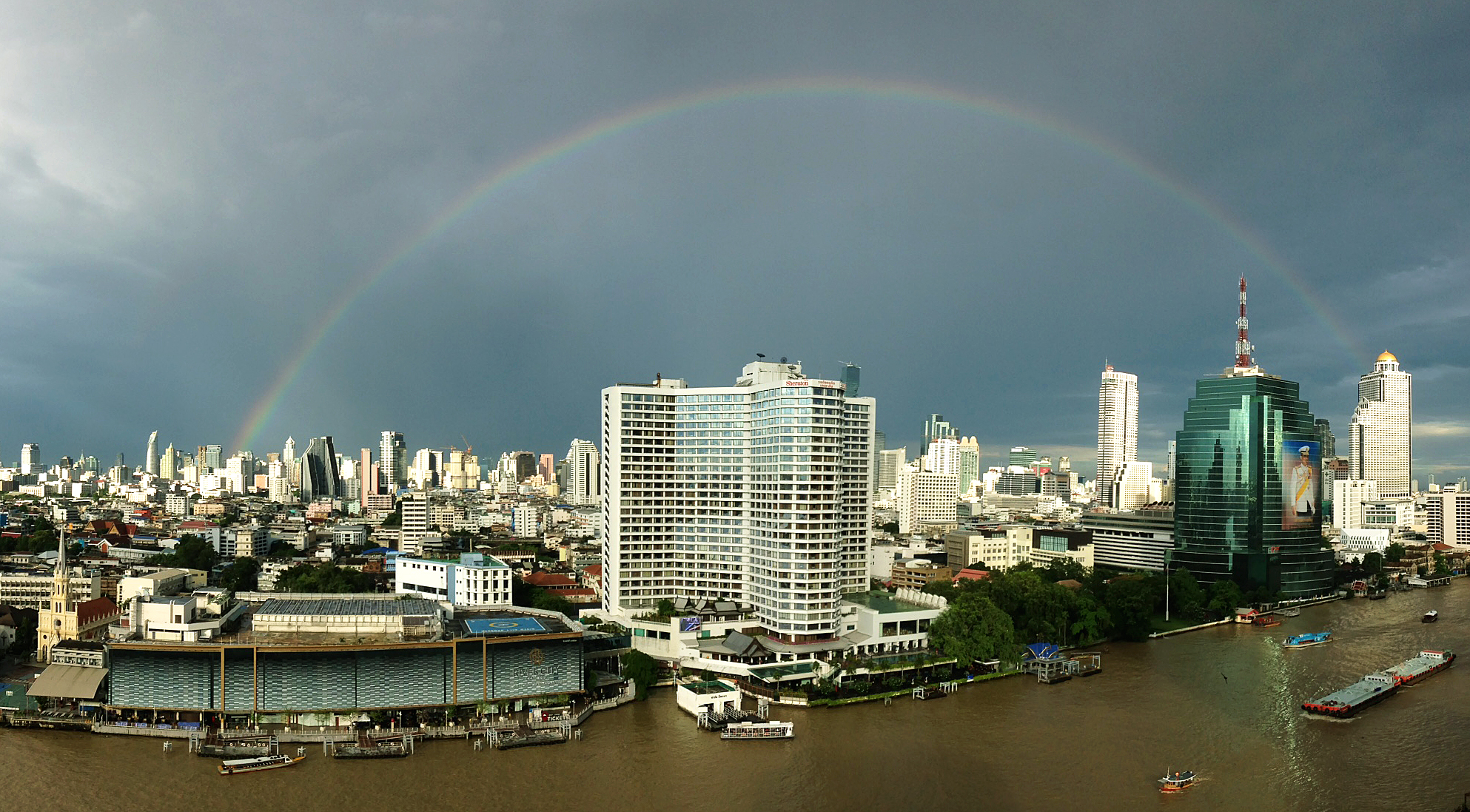
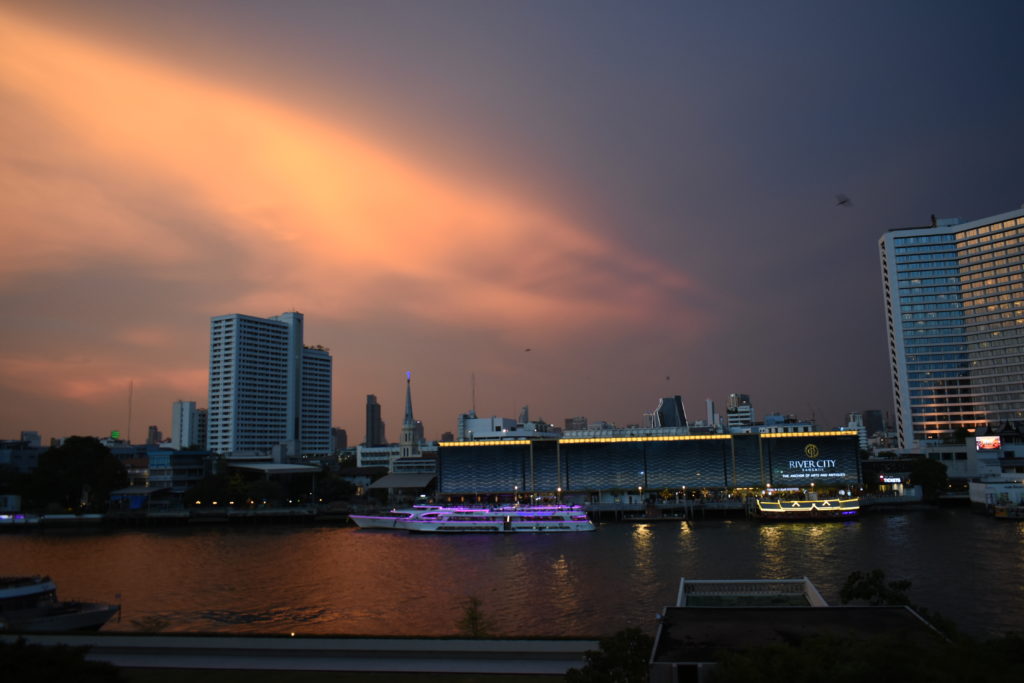
Coming soon… my long interview with basketball superstar Yao Ming, in China!
That’s out now as the cover for Forbes in July 2017. See https://www.forbes.com/sites/forbesasia/2017/06/28/back-in-china-basketball-legend-yao-ming-pursues-philanthropy/#5a9f963c125for click on latest stories!
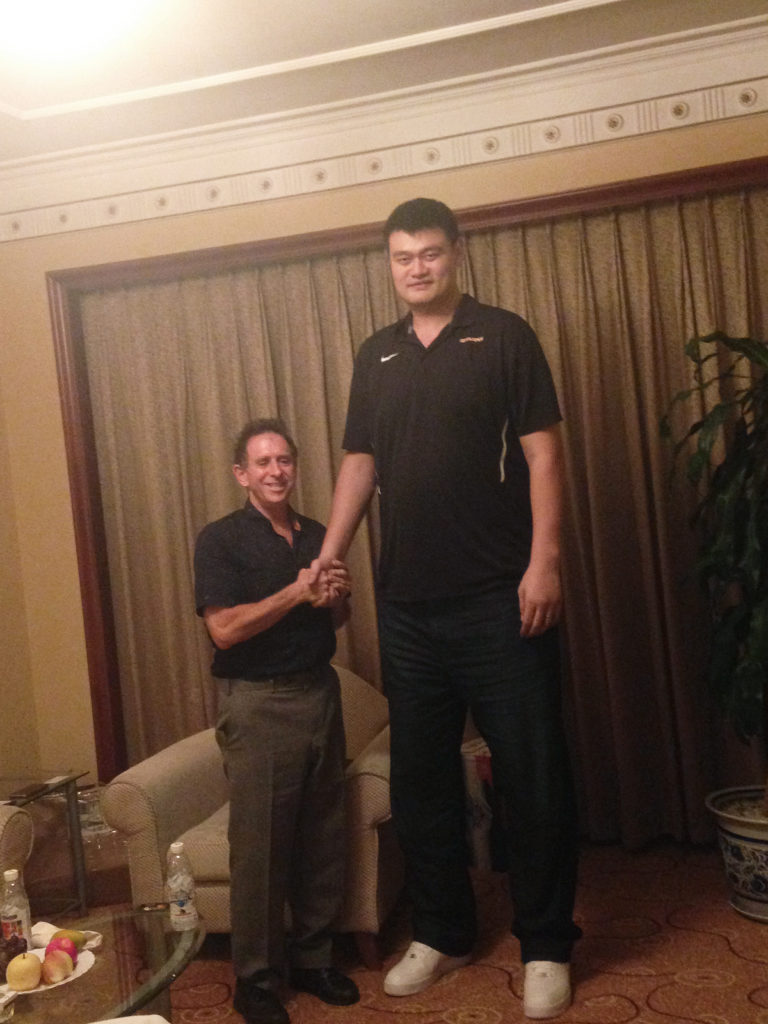
Yao Ming is less than two feet taller than this reporter, but he seems double my size! Coming in July, a long profile on this basketball star, philanthropist and new president of the Chinese Basketball Association
——————————————————————————————————–
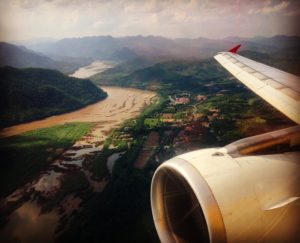
Always a pleasure to fly into Luang Prabang, a charming town of temples, palaces and colonial mansions in upper Laos along the Mekong River
June 2017: I’m in Luang Prabang, one of Asia’s most charming towns, an enchanting ancient capital of temples, palaces and colonial mansions, tucked in mountains and mist along the winding Mekong River in upper Laos. I first visited in 1993, when reclusive Laos received only 25,000 foreign visitors per year. I’ve been back regularly, and even as tourism soared to over 4,000,000 visitors, it’s defied the odds and retained its intrinsic charm and authenticity.
Luang Prabang is hosting the Mekong Tourism Forum, an annual summit of representatives and tour operators from all of the nations along the Mekong, from the mountains of Tibet in China, to the Delta in Vietnam, devoted to creating meaningful tourism and protecting the attractions, culture and communities along the vital river.
This is, by all accounts (including my own perspective), the best MTF ever, not only because of the strong initiatives on sustainable tourism and environmental tourism, but because Luang Prabang has so enthusiastically embraced the forum. Too often, bureaucracies and state agencies push MTF to the fringes of mainstream tourism, struggling to introduce its best practices and encourage multi-governmental cooperation. But little Luang Prabang is already on board with many of these initiatives, realizing sensible regulation and smart conservation are essentially to maintaining the appeal of its unique, serene setting. Bravo!
Sees some of my stories on Laos by clicking World Wonder in the Jungle, and Town Without Cinemas Hosts Southeast Asia’s Best Film Festival, plus lots more on my Laos Page
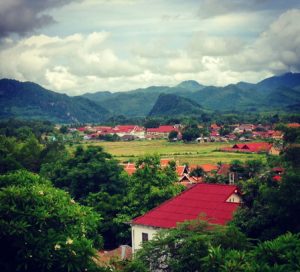
gorgeous panorama of Luang Prabang from the hilltop Luang Prabang View Hotel
and
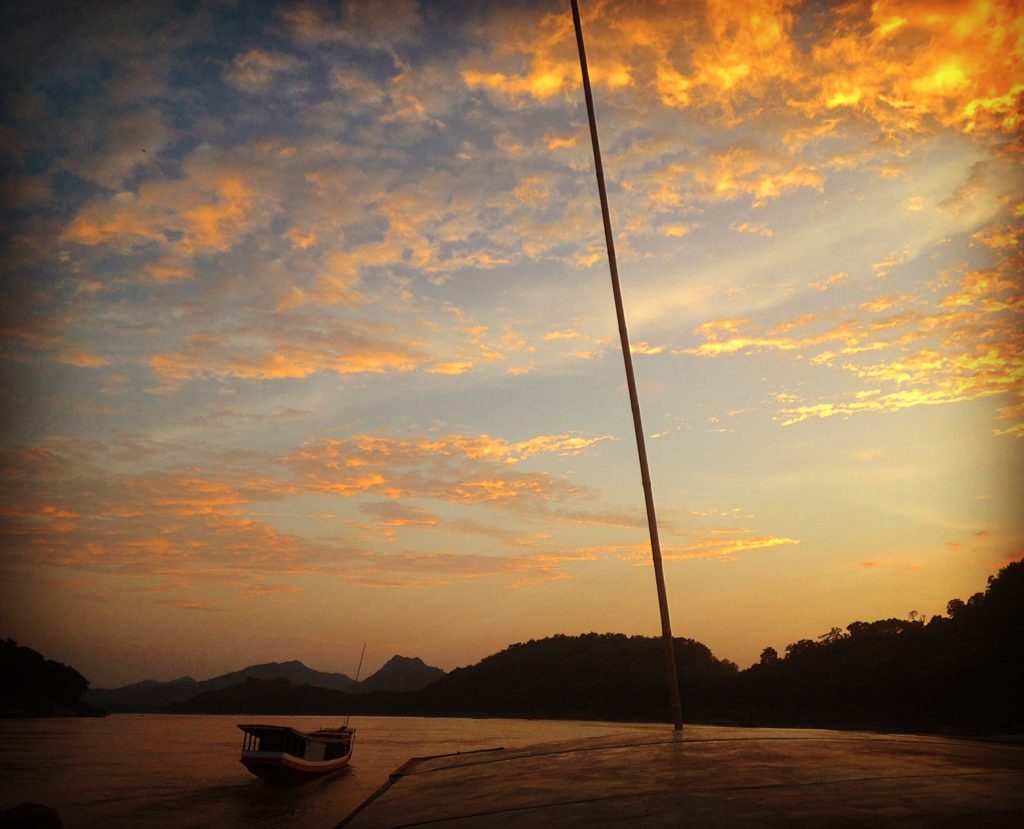
Mandatory to any visit to Luang Prabang is a cruise on the Mekong River, where sunsets are magnificent. Boat trip courtesy of Donald Wong and Amantaka!
————————————————————————————————–
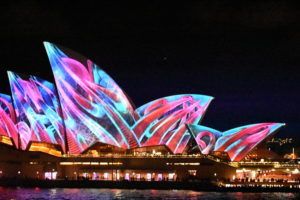
the iconic Sydney Opera House lit up on opening night of Vivid, the amazing festival of light, art, ideas and music.
By RON GLUCKMAN
In late May, I was back in Sydney, at the end of a marvelous three-week visit to Australia. (Stories coming soon in Forbes, the Wall Street Journal and other fine periodicals.) Meantime, I’m attending Vivid, this marvelous festival of art, music, ideas and light that turns Sydney into a hyper-kinetic, surreal playground. Here are a few looks (and my story for the Wall Street Journal has been published, and posted – see Latest Stories )
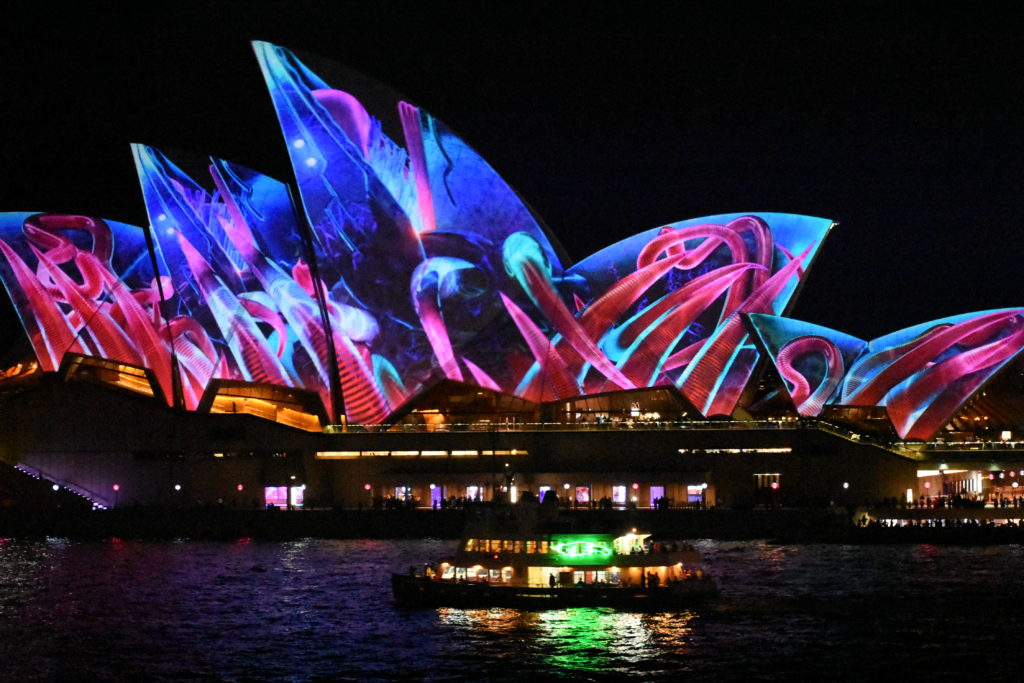
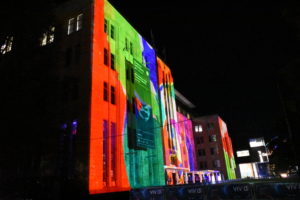
Sydney’s Museum of Contemporary Art itself becomes a work of contemporary art at Vivid, the amazing festival of light, art, ideas and music.
By RON GLUCKMAN
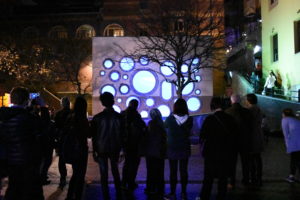
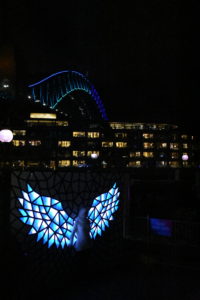
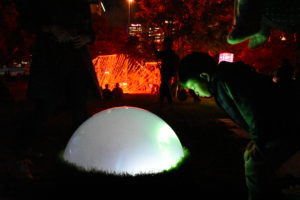

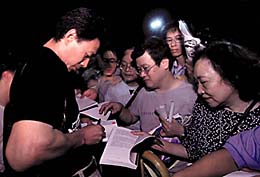 Han Dongfang, 33, makes hot copy, especially in Western capitals. He is handsome, charismatic. He is the last
Han Dongfang, 33, makes hot copy, especially in Western capitals. He is handsome, charismatic. He is the last  Han has lived on Lamma for four years, and in that time he has undergone a remarkable transformation, from shy exile to confident talking head. Eighteen months ago, Han began learning English with a tutor so he could deliver workers’ sermons with aplomb. Within months, a man with no university experience had achieved his goal. When Han flew to America for medical treatment, he knew one word of English — tea. “I drank a lot of tea on that flight!” he recalls.
Han has lived on Lamma for four years, and in that time he has undergone a remarkable transformation, from shy exile to confident talking head. Eighteen months ago, Han began learning English with a tutor so he could deliver workers’ sermons with aplomb. Within months, a man with no university experience had achieved his goal. When Han flew to America for medical treatment, he knew one word of English — tea. “I drank a lot of tea on that flight!” he recalls.
Leave a Reply to which online dating site Cancel reply